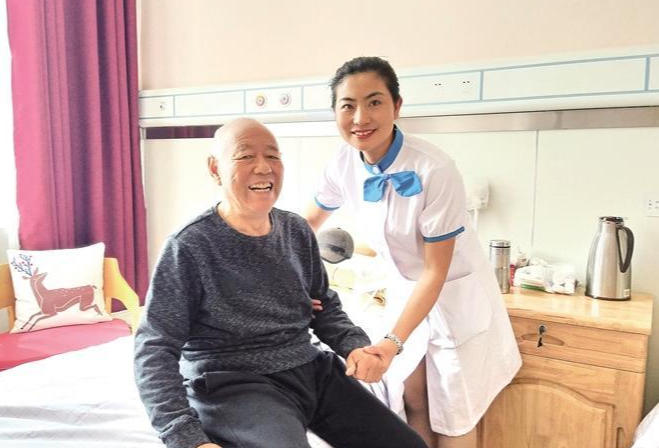A circular on guidelines to promote family doctor contracting services
1. Why should we promote family doctor contract service?
At present, China's medical and health services are facing many challenges such as population aging, urbanization and high incidence of chronic diseases, and the hospital and disease-centered medical and health service model is difficult to meet the needs of the people for long-term and continuous health care. At the same time, residents are concentrated in large hospitals, which is not conducive to improving the medical environment, balancing medical resources, and reasonable control of medical costs. International experience and domestic practice have proved that promoting contracted family doctor services at the grassroots level is an important way to safeguard and maintain people's health under the new situation. Family doctors are people-oriented, oriented to families and communities, and oriented to maintaining and promoting overall health, providing long-term contracted services for the masses, which is conducive to changing the medical and health service model, promoting the shift of the focus of medical and health work and the sinking of resources, allowing the masses to have a health gatekeeper, enhancing the masses' sense of access to the reform, and laying the foundation for the realization of grassroots first diagnosis and graded diagnosis and treatment.
2. What is the current situation of contracting services for family doctors?
Since the issuance of The State Council's "Guiding Opinions on Establishing a General Practitioner System" (Guofa [2011] No. 23), various forms of contract service pilots have been carried out at the national level and in various localities, and new mechanisms such as team formation, financing, incentive and assessment have been actively explored, and have been recognized and welcomed by the masses, accumulating valuable experience and a broad mass foundation for the reform.

At the same time, there are also some problems that restrict the promotion of contract services. It mainly includes the connotation of contract service to be improved, the financing mechanism of contract service is not perfect, and the incentive of family doctors to carry out contract service is insufficient. At the same time, there is a big gap in salary and career development space between family doctors serving at the grass-roots level and medical personnel in superior medical institutions, and it is difficult to attract and retain high-quality talents. These problems need to be solved gradually through reform to ensure the smooth promotion of family doctor contract services.
3. What is the general idea and main goal of developing family doctor contract service?
The general idea of promoting family doctor contract services is to, in accordance with the overall deployment and requirements of deepening the reform of the medical and health system, focus on the goal of promoting the construction of a healthy China and realizing everyone's access to basic medical and health services, take health as the center, promote the focus of medical and health work to move down and resources to sink, and combine the comprehensive reform of primary medical and health institutions and the construction of the general practitioner system. We will accelerate contracting services for family doctors. Constantly improve the content of contract services, highlight the integration of traditional Chinese and western medicine, and enhance the willingness of the masses to take the initiative to use contract services; Establish and improve the internal incentive and external support of contract service, and mobilize the enthusiasm of family doctors to carry out contract service; We will encourage and guide hospitals at or above secondary levels and non-governmental medical and health institutions to participate, improve the coverage and level of contracted services, promote the first diagnosis and treatment at the grass-roots level, provide comprehensive, continuous and coordinated basic medical and health services to the people, and enhance the people's sense of gain.
The main goal of promoting family doctor contract services is to carry out family doctor contract services in 200 pilot cities of public hospital comprehensive reform in 2016, and encourage other areas with conditions to actively carry out pilot projects. The focus is on achieving breakthroughs in the ways, contents, payment, assessment and incentive mechanisms of contracted services, giving priority to the elderly, pregnant women, children, the disabled and other groups, as well as patients with chronic diseases such as hypertension, diabetes, tuberculosis and serious mental disorders. By 2017, the coverage of contracted services for family doctors will reach more than 30 percent, and the coverage of contracted services for key groups will reach more than 60 percent. By 2020, we will strive to expand contract services to the whole population, form a long-term and stable contract service relationship with residents, and basically achieve full coverage of the family doctor contract service system.

4. Who will provide family doctor contract service? What form of service will it take?
The family doctor is the first person responsible for providing contracted services to the masses. At present, family doctors are mainly undertaken by the following personnel: first, registered general practitioners in primary medical and health institutions (including assistant general practitioners and general practitioners of traditional Chinese medicine), second, competent doctors in township health centers and rural doctors, third, eligible public hospital doctors and retired clinicians with intermediate or above titles, especially internal medicine, gynecology, pediatrics, and traditional Chinese medicine doctors. At the same time, eligible non-governmental health care institutions (including individual clinics) are encouraged to provide contracted services and enjoy the same collection and payment policy. In the future, with the development of the talent team of general practitioners, a contracted service team with general practitioners as the core will be gradually formed.
In principle, the contracted service of family doctors should take the form of team service, mainly composed of family doctors, community nurses, public health doctors (including assistant public health doctors), etc., and there are doctors at or above secondary hospitals (including TCM doctors) to provide technical support and business guidance. In order to better meet the needs of the people for traditional Chinese medicine services, it will gradually realize that every family doctor team has a doctor or rural doctor who can provide traditional Chinese medicine services. Qualified areas can also absorb pharmacists, health managers, psychological counselors, social (justice) workers, etc., to join the team. Among them, the family doctor will be responsible for the task allocation and management of the team members, and other specialists and health technicians will also work closely with the team to provide quality services for the contracted residents.
5. How can residents sign up with a family doctor team?
Residents or families can voluntarily choose a team of family doctors to sign a service agreement. The service agreement will specify the content, method and duration of the contracted service, and the responsibilities, rights, obligations and other related matters of both parties. The service period of each contract is one year in principle, after which residents can choose to renew the contract according to the service situation, or choose another family doctor team to sign. Encourage and guide residents to sign contracts nearby, but also across regions to establish an orderly competition mechanism.
At the same time, it is also necessary to strengthen the connection between hospitals and grass-roots medical and health institutions. When guiding residents or families to sign contracts with family doctors, residents or families can also voluntarily choose a secondary hospital and a tertiary hospital, and establish a "1+1+1" combination contract service model, in which they can choose medical institutions according to their needs, and gradually transition to the grass-roots first diagnosis. Treatment outside the combination should be referred by the family doctor to form an orderly medical treatment pattern.

6. What services and benefits can residents get after signing the contract?
After signing up, residents will enjoy basic medical care, public health and agreed health management services provided by a team of family doctors. Basic medical services cover the diagnosis and treatment of common and frequently-occurring diseases, rational drug use, medical path guidance and referral appointment. The public health service covers the basic public health service items and other public health services stipulated by the state. Health management services are mainly based on the health status and needs of residents, to develop different types of personalized contract service content, which can include health assessment, rehabilitation guidance, home beds, home nursing, traditional Chinese medicine "treatment" service, remote health monitoring, etc. By continuously optimizing the content of contracted services to meet the diversified needs of residents for medical and health services.
The signing service will implement differentiated policies for the signed residents in terms of medical treatment, referral, medication, medical insurance, etc., to enhance the attraction of the signing service and the effective use of the signed service by residents. First, in terms of medical treatment, the family doctor team will take the initiative to improve the service model, and provide various forms of services such as whole-process service, on-site service, staggered service, and appointment service for contracted residents in accordance with the agreement. Second, in terms of referral, the family doctor team will have a certain proportion of hospital expert numbers, appointment registration, reserved beds and other resources, so as to facilitate the priority treatment and hospitalization of contracted residents. The general practice departments or designated departments of secondary and above hospitals will connect with the referral services of family doctors and establish a green referral channel for referred patients. Third, in terms of drug use, for contracted chronic disease patients, family doctors can extend a single dose of medicine at their discretion to reduce the frequency of patients' round-trip prescription. For the next transfer of patients, drugs can be prescribed according to the condition and the medical advice of superior medical institutions. Fourth, in terms of medical insurance, differentiated medical insurance payment policies will be implemented for the contracted residents, such as the continuous calculation of the starting line for the referred hospitalized patients who meet the regulations, and the contracted residents will receive a higher proportion of medical insurance reimbursement at the grassroots level, thus enhancing the willingness of residents to use the contracted services.
7. Where does the signing service fee come from? How to bring into play the role of family doctors in reasonable fee control?
The family doctor team provides the agreed contract service for the residents, and the contract service fee is charged annually according to the number of signed services, which is shared by the medical insurance fund, the basic public health service funds and the payment of the signed residents. The specific standards and share ratio shall be determined by the local health and family planning, human resources and social security, finance, price and other departments according to the content of contracted services, the structure of contracted residents, and the bearing capacity of basic medical insurance funds and public health funds.
The family doctor team maintains the health of the contracted residents through contracted services, which is an important measure to control medical costs from the source. At the same time, where conditions permit, areas can explore the possibility of paying the outpatient funds of contracted residents per capita to primary medical and health institutions or family doctor teams, and for patients referred to hospitals by the grassroots, the grassroots or family doctor teams will pay a certain referral fee, further enhancing the power of family doctor teams to control fees. In addition, we can also explore the implementation of total medical insurance payment for the division of labor and cooperation mode such as vertical cooperative medical consortiums, give play to the role of family doctors in the control of medical insurance payment, and rationally guide two-way referral.

8. How to motivate the family doctor team to better provide contracted services?
It is necessary to take various incentive measures to mobilize the service enthusiasm of family doctor team. In terms of income distribution, it is necessary to comprehensively consider factors such as performance appraisal, including contract services, and reasonably determine the total amount of performance salary in primary medical and health institutions, so that family doctors can reasonably improve their income level by providing high-quality contract services. In the internal performance pay distribution of primary medical and health institutions, it can be inclined to staff who undertake front-line clinical tasks such as contracted services by setting up general practitioners' allowances. Grassroots medical and health institutions can withdraw the surplus part of the incentive fund according to regulations, encourage more work, more pay, excellent performance. Hospitals above the second level should also tilt the distribution of performance pay to doctors who participate in contracted services, and encourage doctors at hospitals above the second level to join the family doctor team. Where conditions permit, financial support and guidance can also be provided to family doctor teams and doctors from secondary hospitals and above who participate in contracted services.
At the same time, it should focus on general practitioners in the aspects of staffing, personnel recruitment, professional title promotion, on-the-job training, award promotion, etc., speed up the construction of general practitioners, and improve the level of contracted services. First, excellent personnel will be included in the scope of preferential policies for talent introduction by governments at all levels to enhance the career attractiveness of general practitioners. The second is to implement the "Guiding Opinions on Further Reforming and Improving the Evaluation of Professional titles of Grass-roots health Professionals and Technicians" (Ministry of Human Resources and Social Security issued [2015] No. 94), reasonably set the proportion of senior and intermediate posts for general practitioners in grass-roots medical and health institutions, expand the promotion space of professional titles, and focus on personnel with excellent contract service assessment. The evaluation results of contracted services are taken as an important factor for professional title promotion. The third is to commend the outstanding family doctors and their teams in accordance with national regulations, and vigorously publicize advanced models. The fourth is to expand training channels at home and abroad, establish and improve the system of doctors from secondary hospitals and above to carry out business guidance at the grassroots level regularly and family doctors to study in clinical teaching bases regularly. Strengthen the continuing medical education of family doctors and team members to improve the quality of contracted services.
9. How to strengthen the performance assessment of contracting services?
The establishment of scientific performance appraisal mechanism is the key to promote family doctors to provide quality service. First, improve performance appraisal standards. Local health and family planning, traditional Chinese medicine management, human resources and social security, finance and other departments should improve contract service standards and management norms. Establish a contract service evaluation index system with the number and composition of the contract object, service quality, health management effect, residents' satisfaction, medical cost control, and the proportion of basic medical treatment of the signed residents as the core. Second, we will carry out regular assessment. Encourage family doctor representatives, contracted resident representatives and social representatives to participate in the assessment, and disclose the specific assessment and evaluation results of the family doctor team to the public in a timely manner. Third, establish a linkage mechanism. Performance appraisal results are linked to medical insurance payments, public health service funding allocations, and team and individual performance allocations. For the team of family doctors with unqualified evaluation results and outstanding public opinions, a corresponding punishment mechanism shall be established. Fourth, we will give play to the role of public oversight. Establish a feedback and evaluation system with contracted residents as the main body and open to the public, and smooth the channels of public supervision, so that the service quality and level of the family doctor team can get timely feedback and evaluation from the residents, and serve as an important basis for performance assessment and an important reference for residents to choose the family doctor team.

10. How to provide technical support for contracted services?
The smooth promotion of the signing service and the benign interaction between the signing parties cannot be separated from the collaborative sharing of resources and the strong support of technology. It is necessary to actively promote the sharing of resources among different medical and health institutions, and use new technologies such as "Internet plus" and telemedicine to improve the efficiency of service and interaction between family doctors, doctors in secondary hospitals and above, and contracted residents, save costs, improve experience, and enhance performance. The first is to integrate the existing inspection and inspection, disinfection supply centers and other resources of secondary and above hospitals to open up to grass-roots medical and health institutions. The second is to explore the establishment of independent regional medical inspection institutions, pathological diagnosis institutions, medical imaging inspection institutions, etc., to achieve regional resource sharing. The third is to improve the equipment and facilities necessary for family doctors to contract services, and where conditions exist, family doctors can be equipped with uniform clothes, visiting equipment, transportation, etc. The fourth is to build a sound regional medical and health information platform to realize information sharing and business collaboration such as health records, electronic medical records, and inspection reports of contracted residents. Fifth, through telemedicine, instant messaging and other means, to strengthen the technical exchanges and business guidance between doctors in secondary and above hospitals and family doctors. The sixth is to build a communication platform between family doctors and contracted residents through intelligent clients and other ways to provide convenience for information consultation, interactive communication, patient feedback, health management, etc. Seventh, the active use of mobile Internet, wearable devices, etc. to provide signed residents with online appointment for diagnosis and treatment, waiting for diagnosis and treatment reminder, pricing and payment, diagnosis and treatment report inquiry, drug delivery and health information collection and other services to enhance the public's sense of access to contracted services.
- EMERSON
- Honeywell
- CTI
- Rolls-Royce
- General Electric
- Woodward
- Yaskawa
- xYCOM
- Motorola
- Siemens
- Rockwell
- ABB
- B&R
- HIMA
- Construction site
- electricity
- Automobile market
- PLC
- DCS
- Motor drivers
- VSD
- Implications
- cement
- CO2
- CEM
- methane
- Artificial intelligence
- Titanic
- Solar energy
- Hydrogen fuel cell
- Hydrogen and fuel cells
- Hydrogen and oxygen fuel cells
- tyre
- Chemical fiber
- dynamo
- corpuscle
- Pulp and paper
- printing
- fossil
- FANUC
- Food and beverage
- Life science
- Sewage treatment
- Personal care
- electricity
- boats
- infrastructure
- Automobile industry
- metallurgy
- Nuclear power generation
- Geothermal power generation
- Water and wastewater
- Infrastructure construction
- Mine hazard
- steel
- papermaking
- Natural gas industry
- Infrastructure construction
- Power and energy
- Rubber and plastic
- Renewable energy
- pharmacy
- mining
- Plastic industry
- Schneider
- Kongsberg
- NI
- Wind energy
- International petroleum
- International new energy network
- gas
- WATLOW
- ProSoft
- SEW
- wind
- ADVANCED
- Reliance
- YOKOGAWA
- TRICONEX
- FOXBORO
- METSO
- MAN
- Advantest
- ADVANCED
- ALSTOM
- Control Wave
- AB
- AMAT
- STUDER
- KONGSBERG
- MOTOROLA
- DANAHER MOTION
- Bently
- Galil
- EATON
- MOLEX
- Triconex
- DEIF
- B&W
- ZYGO
- Aerotech
- DANFOSS
- KOLLMORGEN
- Beijer
- Endress+Hauser
- MOOG
- KB
- Moxa
- Rexroth
- YAMAHA
- Johnson
- Westinghouse
- WAGO
- TOSHIBA
- TEKTRONIX


Email:wang@kongjiangauto.com



































































































































